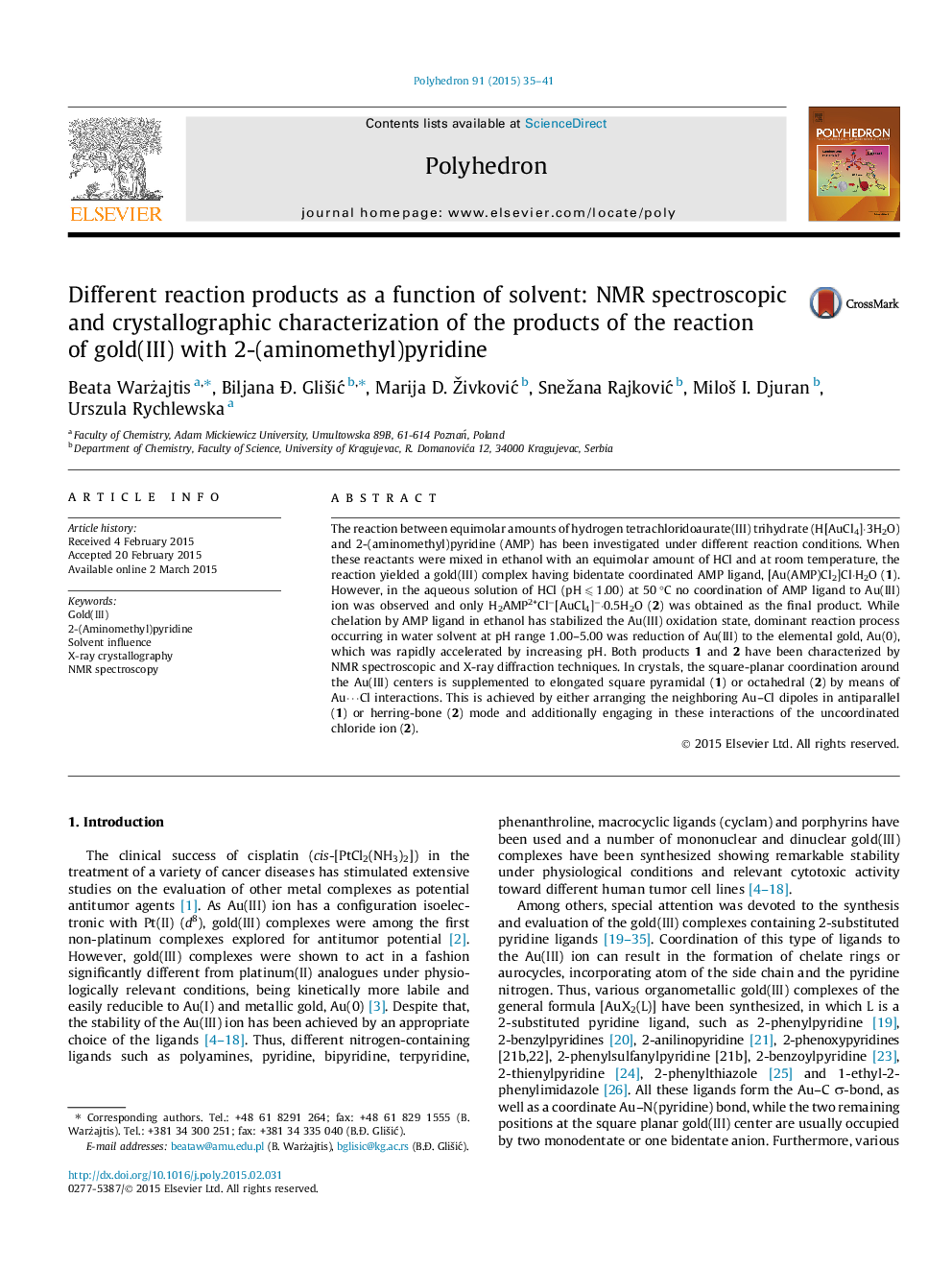| کد مقاله | کد نشریه | سال انتشار | مقاله انگلیسی | نسخه تمام متن |
|---|---|---|---|---|
| 1335223 | 1500248 | 2015 | 7 صفحه PDF | دانلود رایگان |

The reaction between equimolar amounts of hydrogen tetrachloridoaurate(III) trihydrate (H[AuCl4]·3H2O) and 2-(aminomethyl)pyridine (AMP) has been investigated under different reaction conditions. When these reactants were mixed in ethanol with an equimolar amount of HCl and at room temperature, the reaction yielded a gold(III) complex having bidentate coordinated AMP ligand, [Au(AMP)Cl2]Cl·H2O (1). However, in the aqueous solution of HCl (pH ⩽ 1.00) at 50 °C no coordination of AMP ligand to Au(III) ion was observed and only H2AMP2+Cl−[AuCl4]−·0.5H2O (2) was obtained as the final product. While chelation by AMP ligand in ethanol has stabilized the Au(III) oxidation state, dominant reaction process occurring in water solvent at pH range 1.00–5.00 was reduction of Au(III) to the elemental gold, Au(0), which was rapidly accelerated by increasing pH. Both products 1 and 2 have been characterized by NMR spectroscopic and X-ray diffraction techniques. In crystals, the square-planar coordination around the Au(III) centers is supplemented to elongated square pyramidal (1) or octahedral (2) by means of Au⋯Cl interactions. This is achieved by either arranging the neighboring Au–Cl dipoles in antiparallel (1) or herring-bone (2) mode and additionally engaging in these interactions of the uncoordinated chloride ion (2).
The monohydrate of the coordination compound [Au(2-(aminomethyl)pyridine)Cl2]Cl, an analogue of cisplatin, can be obtained if the reaction substrate H[AuCl4] is dissolved in ethanol instead of water. Chelation stabilizes the Au(III) oxidation state for use in normal conditions.Figure optionsDownload as PowerPoint slide
Journal: Polyhedron - Volume 91, 8 May 2015, Pages 35–41